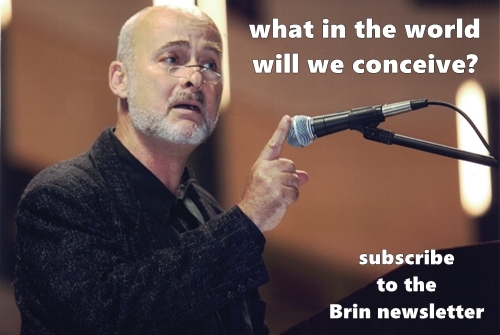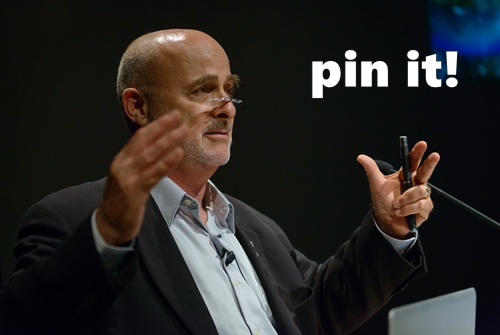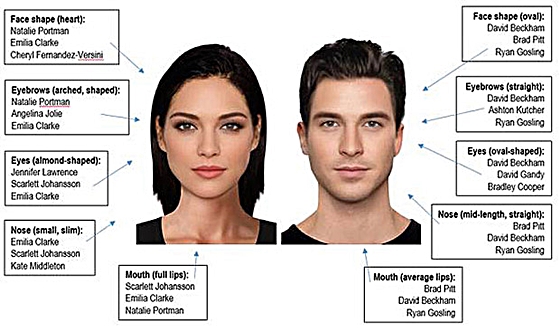
the effects of two-way human sexual selection
Not only are human females compelled to compete for mates, something uncommon in most species, they appear also to have been the sex most changed (at least in outward appearance) by runaway sexual selection in Homo sapiens, making women the least primate-looking of all higher primates. In comparison, males have been left relatively untouched [16].
Moreover, there is a predictable and tragic consequence to the development of neoteny as an emblem of adult female attractiveness. Consider it this way. Sexual selection requires two partners in order to work, first the sex under competitive stress (normally males, but in this case women) among whom a certain fraction are "chosen." If some trait has a high correlation with reproductive success, the prevalence of that trait will increase in the next generation. And true runaway will accelerate even faster if the choosers change as well — becoming ever more critical and demanding of that trait. So if paedomorphism was women's runaway trait, there's every reason to picture men growing ever more attracted to paedomorphism in women, at a matching pace. Obvious enough, so far.
But paedomorphism means resemblance to children! Consider the bizarre dilemma, then. In order to attract quality mates — protector types — women began taking on the external features of the objects of the protective impulse — children. This was rewarded, presumably, with reproductive success. But it also meant that men began associating with sexual desirability the very outward traits which are most directly associated with childhood!
The calamitous sickness of sex with pre-pubescents is one of the nastier features of our species. It is denounced by the majority, yet persists at low levels in all cultures, posing a dilemma for those contemplating a better tomorrow for our descendants. But now we might suggest one possible explanation of the origin of this dysfunction. It may derive, at least in part, as an aberrant offshoot from the two-way cycle of runaway sexual selection just described. If ever there was proof that evolution is not planned, this is it. An undergraduate could have predicted the tragic consequences.
Fecundity, health, neoteny... these are superficial signs which human males came to associate with feminine sexual attractiveness. Unfortunately, this boat-load of attributes was without a tiller, headed on a collision course with the best interests of the very children the whole game is about in the first place! What was needed was an emergency adaptation to help sane human males tell children apart from adult, fecund women. It is at this point, I contend, that human females developed a secondary set of exaggerated physical traits, not to elicit sex from males but in order to help high-end males across this tragic trap. One of the most pronounced of these secondary traits was the ballooning of women's breasts.
A male does not need the stimulation of breasts simply to desire copulation. But amplified breasts, along with the waist-pelvis flair, do add to a suite of characteristics which give a normal adult male permission to admit his arousal, even to himself. They are not so much signals to indicate fecund femaleness as indicators of female adulthood. Healthy men are probably protected from sexual impulses toward children by a set of interrupt switches. These switches are by now so well developed that most men are scarcely aware of the beginnings of arousal by borderline pubescents... and feel shame when that arousal even momentarily reaches consciousness [17]. It is the unfortunate failure of such switches that provokes some to behave aberrantly. Likewise, it was the successful introduction of those switches that caused the majority of men to need more than just health and neoteny to experience the full flux of desire.
So women were off again, down the steep slope of competition. All else being equal, the desirable males were more attuned to women with fully developed breasts than to those whose glands were sufficient for nursing, but compact as a chimp's. Today, in order to help win the desperate game, North American women spend the annual budget of some small nations "correcting" a physical condition which has nothing to do with any illness or incapacity to nourish their young. Breast augmentation joins other types of cosmetic surgery — procedures designed to restore the appearance of health and neoteny. It is a sign not only of the stresses faced by women naturally, but how these have been amplified and exaggerated by contemporary society.
In this context, one might be tempted by an unusual interpretation of the "Venus-Ishtar" stone figurines found in neolithic sites — depicting female forms with exaggerated breasts and hourglass figures. Perhaps they were portable and artificial permission cues, serving much the same function as the milder forms of pornography do today, allowing solitary males to release pent-up physiological tension that accumulates behind a dam of inhibitions that pre-date any religious stricture.
Notwithstanding such speculative asides, we are drawn to one unmistakable conclusion. In the strange story of humanity, it is the female who has been forced to wear the equivalent of bright, garish plumage, even though she is still the one with the most exhausting task in reproduction, and still the one with the most to lose. This combination is without known parallel in nature.
We are a strange clan, indeed.
social implications
One could be bloody-minded and suggest the present quandary will take care of itself, since presumably the children of "reindeer" men will be less successful than those whose fathers help nurture them. It has been said that the archaic term, illegitimacy, could be applied to a deadly plague sweeping the United States in the late Twentieth Century — one that correlates more closely with childhood poverty, death and disability than any other group of causes, including accidents and infectious agents. If failure of men to assist in the raising of their children has such consequences, it might eventually result in the genetic rewarding of male nurturance, so that men equilibrate about a new "best" strategy, centered closer to shared child care [18]. Alas, in the context of a modern and compassionate society, this laissez-faire approach is callous, slow, and no solution at all.
Certainly we should put even greater effort into social conditioning, to try altering the ratio of "storks" to "reindeer" among human males. No doubt education can change the proportionate distribution of types. Unfortunately, those who expect a complete panacea out of socialization are likely to be disappointed. What good will it do to exhort boys not to act like elk, if they see elk-style men having success?
A better remedy might be to help women and girls learn to judge better — to tell apart the various types of men — and to distinguish a sincere promise from mere words aimed at an immediate end. In other words, use the tools of science to help young female Homo sapiens do what most females of other species do — choose as well as they can, despite the complexities of modern context. For many, this could make the difference between a successful, happy life and eventual abandonment in poverty. Indeed, the pages of most womens' magazines seem obsessed with exactly this effort — floundering chaotically toward alchemical prescriptions for choice-directed happiness. This effort currently receives virtually no support from feminist intellectuals, who consider the approach ideologically anathema, holding that woman should not base her happiness on marriage or successful mate-choice, even though such success, when achieved, demonstrably leverages improved lives for women and children in all contexts and at all social levels, and furthermore that same success can be perfectly compatible with actualization in career and other areas of life. In other words, a woman who chooses a mate well is also more likely to succeed in areas beyond home and marriage.
Even if a program teaching girls to make wise choices were implemented and highly effective, there would still be a rub; for so long as the goal is "one man for each woman" the rules of a zero-sum game continue to apply. There will be winners and losers, and the spectacle of females fiercely competing for quality mates will continue.
Finally, humanity may soon have the power to plan and execute alterations to its own genetic heritage. It's conceivable that a few prunings of DNA might excise the worst ancient reproductive behaviors, while retaining desirable protective drives. Brin (1992) describes how amazonogenesis might be added to the suite of impressive capabilities of the human womb, effectively ending male social dominance. Such programs would demand careful thought, and the wisdom to put them into effect only by consensus... a task almost as daunting politically as scientifically.
None of this implies the situation for human beings is hopeless. Through a combination of methods we might improve matters to the point where we are merely uncomfortable, instead of painfully confused. But one realization clearly emerges out of this discussion — there is no design possible for a human utopia. Whatever society we put together will at best be a network of compromises.
REMARKS
It happens all too often that this sort of speculative essay is taken too seriously, by both authors and all-too-easily persuaded (or outraged) readers. Evolutionary paleo-sociobiology is a subject which, for lack of solid facts, is all too prone to emotional, egotistical or wishful posturing. It is well to recall that one can only go so far by spinning reasonable-sounding scenarios. Those I have presented here are mere conjectures. I claim nothing more.
Secondly, open discussion can only do good here. Once people of good will, both men and women, are better aware of the hand dealt them by evolution, they must almost certainly grow better at playing it.
And there is an up side in this odd tale of runaway selection, as expressed movingly by Sarah Hrdy (1981, p.14):
... it will be well to keep in mind a central paradox of the human condition — that our species possesses the capacity to carry sexual inequality to its greatest known extremes, but we also possess the potential to realize an unusual social equality between the sexes...
For all its tragic implications, this cycle of mutual selection has meant that both genders experience much the same range of emotions during their lifetimes. True, men and women seem at times to concentrate on different priorities, which come into sad conflict in our present culture. But standing back, one can say without any doubt that both girls and boys grow up knowing what it's like to feel the fear and excitement of initiating an encounter, as well as being the one to evaluate or choose, to accept or refuse. In most species these activities are strictly reserved for one sex or the other, but men and women both experience rejection, and each knows all the happy and aggravating phases of bonding. This may help women and men empathize with each other to a degree I would suspect is unprecedented between the sexes in nature, where males and females have little experience of each others' ways. Those who perceive only the gulf between men and women should take note.
Finally, although we may have stumbled about blindly in our million years of feverish adaptation, and while we now find ourselves boxed in, with little hope for anything like utopia, there is no cause for shame. If we are awkward and uneven in our adaptations, it is because we are a people still in rapid flux. One cannot hope or expect that a species will be perfectly at peace with itself when it is still in furious transition from what it once was, toward what it eventually may become. The first species ever to have some control or choice about that destiny.
Compassion is the trait we may be most proud of. Ironically, it can have come from nowhere else than the bizarre story of our ancestors' competition for reproductive success.
THE END
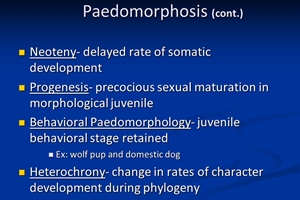
NOTES
[16] Note that this dichotomy is particularly pronounced in the so-called Caucasoid races. In some other groups, males seem to differ less from females in hirsuteness and exaggeration of female breasts is less pronounced. Nevertheless, women of all races appear visually less apelike than their brothers.
[17] Evolution is not planned. In order for my scenario to take place, we need a plausible cost to males, of not following the road I describe. Clearly sex with children is unprofitable, a waste of sperm and distraction. Moreover, once human life span lengthened enough for parents to expand their supervisory role, there would have been a drive for moms and dads to forbid other males to sexually assault their children. If this were enforced severely, one could imagine men developing a hesitancy about mating with any female lacking adulthood cues.
[18] Almost no human society is known that did not exhibit the practice of polygyny, in one form or another. But natural hunter gatherer societies appear to have varied widely in the criteria used for selecting "chiefs" — (defined as those males invested with both tribal authority and accompanying reproductive advantages). In some clans, protector types seem to have been chosen, with active participation in this selection by female councils. In others, more brutal types prevailed simply on the basis of fighting ability, and females lacked any voice in determining who would become a chief and have multiple wives. Note that the difference among native tribes was not whether there was polygyny by alpha males, but who set the criteria for its implementation. (Among the Cherokee, a chief could not choose his second wife. When the first wife felt ready, she would select someone she could get along with, and he had at best a veto. Also, family-abandonment was a major crime.) These two archetypal patterns appear to have rewarded profoundly different male personality traits, both of which persist today. If we call serial-monogamy a sequential form of polygyny, the rate in supposedly monogamous contemporary America is clearly much higher than it was in most aboriginal tribes. It is left to the reader to decide which category of male is having the most reproductive success today — the "user" type, or faithful "dad" types. Despite greater death rates associated with the "inseminate-and-leave" strategy, it clearly produces a lot of offspring... and will continue doing so until our "tribe" changes its partly-polygamous mating practices, or at least re-defines its implied criteria for choosing "chiefs."
ACKNOWLEDGEMENTS
For their assistance, conversations and criticism, the author would like to thank: Dr. Joe Miller, Dr. James Moore, Dr. Gregory Benford, Dr. Paul Levinson, Dr. Sarah Blaffer Hrdy, Dr. David Buss and Dr. Cheryl Brigham.
REFERENCES
Alexander, Richard D., Hoogland, John L., Howard, Richard D., Noonan, Katherine M. & Sherman, Paul W. (1979) "Sexual dimorphisms and breeding systems in pinnipeds, ungulates, primates & humans." in Evolutionary Biology & Human Social Behavior, N.A. Chagnon & W. Irons (eds.), Duxbury Press.
Brin, David (1992) Glory Season. New York, Bantam Books.
Buss, David M. (1994) The Evolution of Desire: Strategies of Human Mating. New York, Basic Books.
Calvin, William (1991) The Ascent of Mind: Ice Age Climates and the Evolution of Intelligence. New York, Bantam Books.
Fisher, R. A. (1958) The Genetical Theory of Natural Selection (Second Edition). New York, Dover.
Gangestad, S.W. (1993) "Sexual Selection and Physical Attractiveness: Implications for Mating Dynamics." Human Nature, 4, 205-235.
Gowaty, P.A. (1992) "Evolutionary Biology and Feminism." Human Nature, 3, 217-249.
Hrdy, Sarah (1981) The Woman That Never Evolved. Cambridge, Harvard University Press.
Jones, D. & Hill, K. (1993) "Criteria of Facial Attractiveness in Five Populations." Human Nature, 4, 271-296.
Robinson, C. L., Lockard, J.S. & Adams, R. M. (1979) "Who looks at a Baby in Public." Ethol. Sociobiol., 1: 87-91.
Singh, D. (1993) "Body Shape and Womens' Attractiveness: The Critical Role of Waist-to-Hip Ratio." Human Nature, 4, 297-331.
Thornhill, R. & Gangestad, S.W. (1993) "Human Facial Beauty: Averageness, Symmetry, and Parasite Resistance." Human Nature, 4, 237-269.
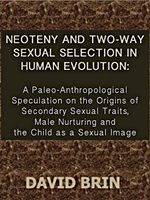
about this article
"Neoteny and Two-Way Sexual Selection in Human Evolution" (published in full here) was first published in the Journal of Social and Evolutionary Systems, vol.18(3) pp.257-276, January 1996.
Copyright © 1995 by David Brin. All rights reserved.
join David Brin's discussions
David Brin blogs at Contrary Brin and posts social media comments on Facebook, Twitter, Quora, and MeWe specifically to discuss the political and scientific issues he raises in these articles. If you come and argue rationally, you're voting, implicitly, for a civilization that values open minds and discussions among equals.
books cited here
David Brin, Glory Season
David M. Buss, The Evolution of Desire: Strategies of Human Mating (book #ad)
William Calvin, The Ascent of Mind (book #ad)
R.A. Fisher et al., The Genetical Theory of Natural Selection (book #ad)
Sarah Blaffer Hrdy, The Woman That Never Evolved: With a New Preface and Bibliographical Updates, Revised Edition (book #ad)
adapting to ourselves
letting others have their say
Sarah Blaffer Hrdy, Mothers and Others: The Evolutionary Origins of Mutual Understanding
Frans de Waal, The Age of Empathy: Nature's Lessons for a Kinder Society
Richard Wrangham, Catching Fire:How Cooking Made Us Human
Peter B. Gray and Kermyt G. Anderson, Fatherhood: Evolution and Human Paternal Behavior
William R. Jankowiak, ed., Intimacies: Love and Sex Across Cultures
Angela Saini, Inferior: How Science Got Women Wrong — and the New Research That's Rewriting the Story
William von Hippel, The Social Leap: The New Evolutionary Science of Who We Are, Where We Come From, and What Makes Us Happy
#AmazonCommissionsEarned
a brief intro to author David Brin

novels
David Brin's science fiction novels have been New York Times Bestsellers, winning multiple Hugo, Nebula and other awards. At least a dozen have been translated into more than twenty languages. They range from bold and prophetic explorations of our near-future to Brin's Uplift series, envisioning galactic issues of sapience and destiny (and star-faring dolphins!).
Learn More
shorter fiction
Short stories and novellas have different rhythms and artistic flavor, and Brin's short stories and novellas, several of which earned Hugo and other awards, exploit that difference to explore a wider range of real and vividly speculative ideas. Many have been selected for anthologies and reprints, and most have been published in anthology form.
Learn More
Contrary Brin blog
Since 2004, David Brin has maintained a blog about science, technology, science fiction, books, and the future — themes his science fiction and nonfiction writings continue to explore.
Learn More
social media influencer
Who could've predicted that social media — indeed, all of our online society — would play such an important role in the 21st Century — restoring the voices of advisors and influencers! Lively and intelligent comments spill over onto Brin's social media pages.
Learn More
scientist
David Brin's Ph.D in Physics from the University of California at San Diego (the lab of nobelist Hannes Alfven) followed a masters in optics and an undergraduate degree in astrophysics from Caltech. Every science show that depicts a comet now portrays the model developed in Brin's PhD research.
Learn More
transparency expert
Brin's non-fiction book, The Transparent Society: Will Technology Force Us to Choose Between Freedom and Privacy?, continues to receive acclaim for its accuracy in predicting 21st Century concerns about online security, secrecy, accountability and privacy.
Learn More
speaker & consultant
Brin speaks plausibly and entertainingly about trends in technology and society to audiences willing to confront the challenges that our rambunctious civilization will face in the decades ahead. He also talks about the field of science fiction, especially in relation to his own novels and stories. To date he has presented at more than 200 meetings, conferences, corporate retreats and other gatherings.
Learn More
future/tech advisor
Brin advises corporations and governmental and private defense- and security-related agencies about information-age issues, scientific trends, future social and political trends, and education. Urban Developer Magazine named him one of four World's Best Futurists, and he was appraised as "#1 influencer" in Onalytica's Top 100 report of Artificial Intelligence influencers, brands & publications. Past consultations include Google, Microsoft, Procter & Gamble, and many others.
Learn More


